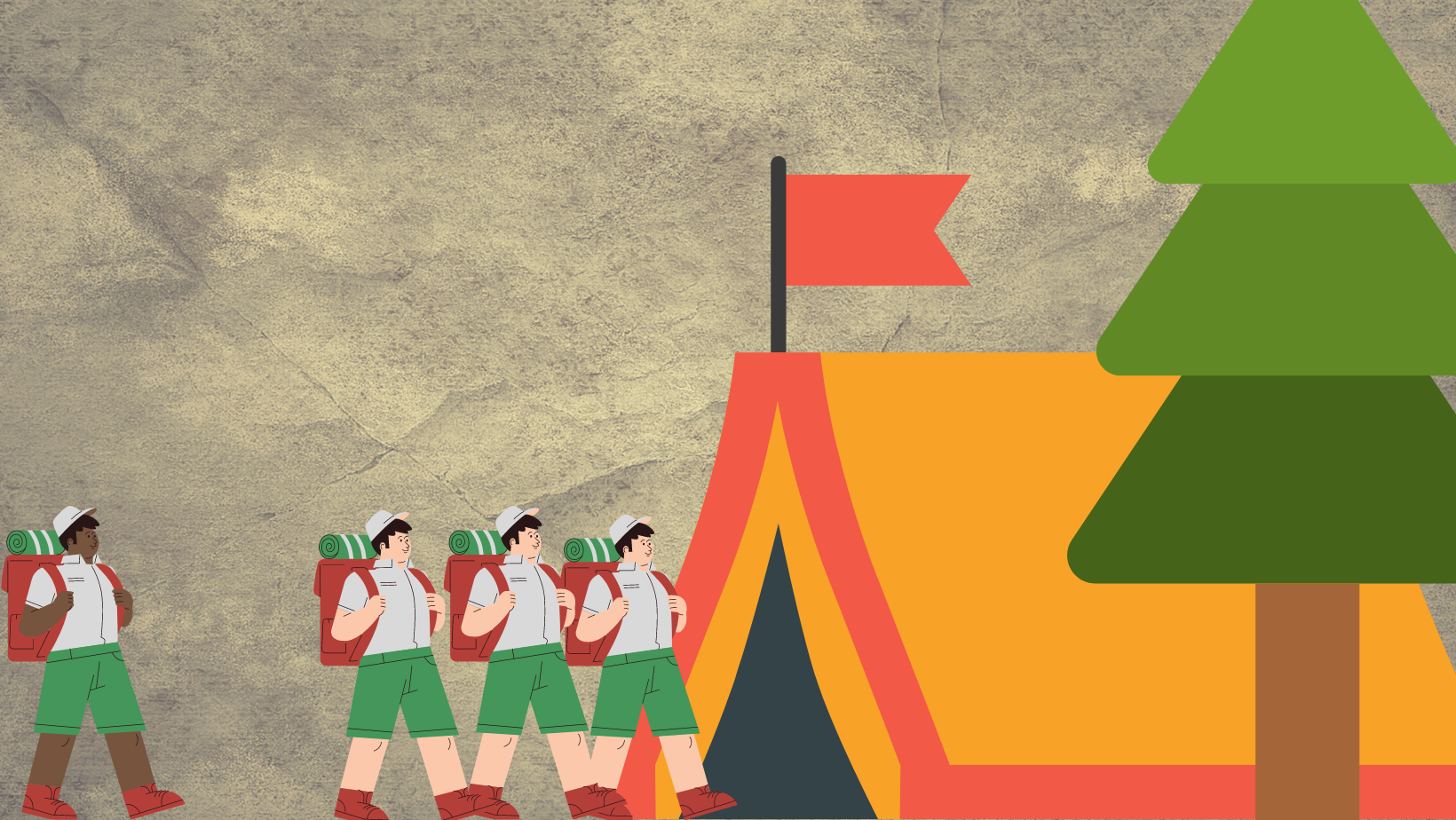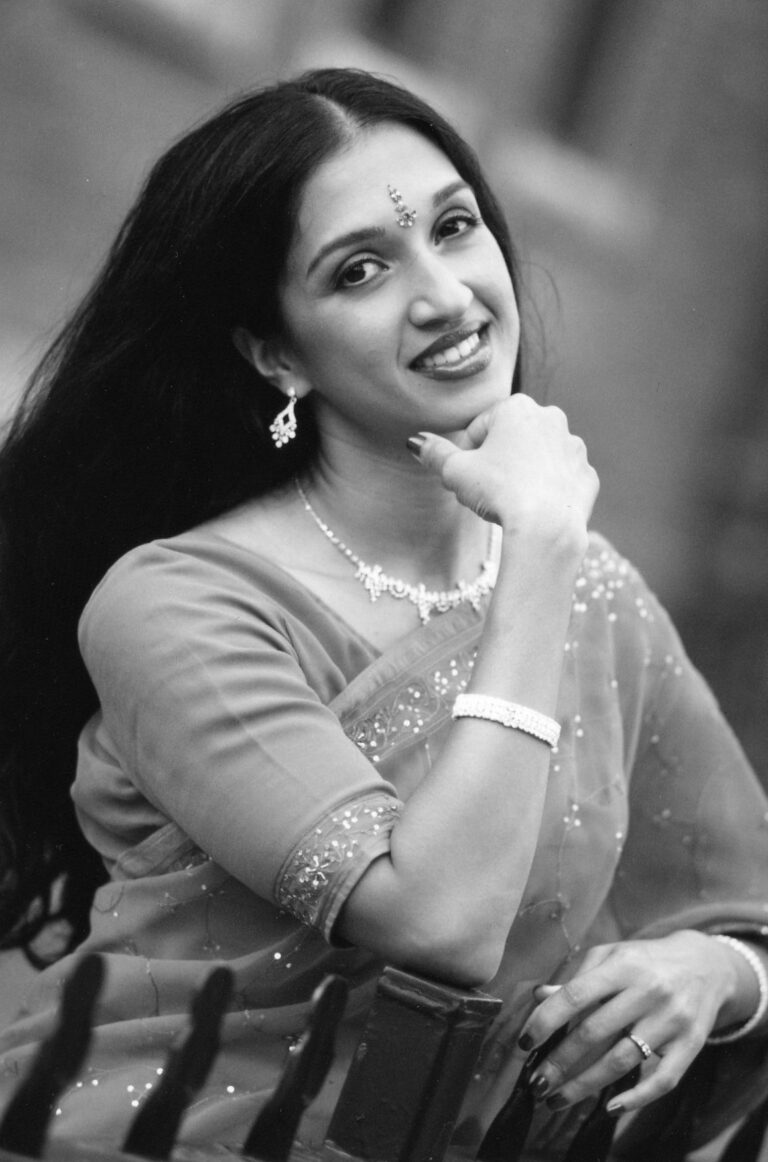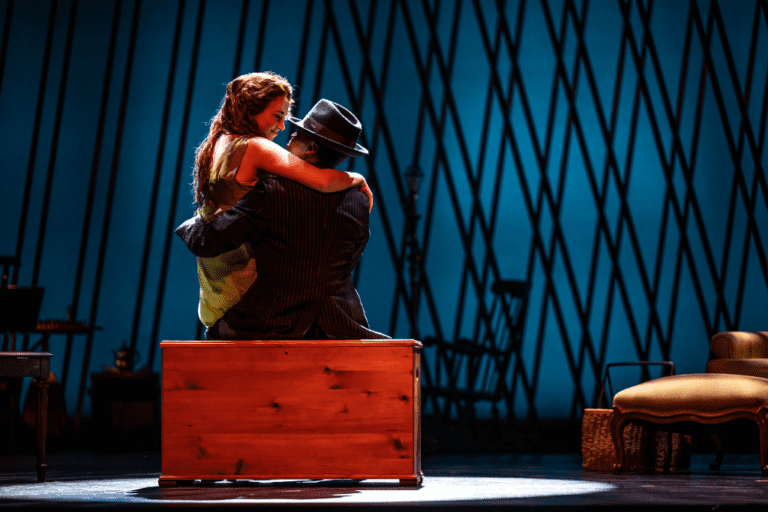Settlers and Indians
It was summer of 1982, and my parents had enrolled me in Camp Cabot, a day camp run by the St. John’s YMCA. Every morning I, along with the sixty other campers and a dozen teenage counsellors, travelled on rickety school buses to reach the campsite, a vast, wooded area a few kilometres outside the city. I was ten years old, and I was not the outdoors type. I was also not the kind of child who delighted in games of that era like Duck Duck Goose, which we played at camp. I imagine that like many people, I would rather forget such games.
However, there was one game we played called Settlers and Indians.
That one’s worth remembering.
The counsellors divided the campers into two teams, and one side was designated to be in hot pursuit of the other. If the ‘Settlers’ were the predators, the ‘Indians’ were given a head start of ten minutes to find a hiding place in the forest, and vice versa. The object of the game was for one side to round up everyone on the other side and take them into captivity. I don’t remember if the game ended when everyone on the losing side was captured, or if we stopped playing because time had run out. I also don’t remember how people on one side physically differentiated themselves from those on the other side. But I remember clearly the trepidation of hiding behind tree trunks, inside hollow logs or bushes, hoping that no one would find me, but also wishing that I did not have to play this game.
‘Settlers and Indians’ was the Canadian equivalent of ‘Cowboys and Indians,’ and I wonder how many camps featured similar games celebrating the monstrous history of where we live. It’s clear who won that particular game, and that truth is all too apparent now as we brace ourselves for the discovery of more unmarked graves of Indigenous bodies.
As Indians from India, my parents and I did not question such a camp game. In our quest to be Canadians, we accepted a predominant white settler culture. I think now it was that tolerance and complicity by Indians like me that has also contributed to where we are today. By accepting this predominance, we helped to reinforce and legitimize a culture responsible for residential schools, the Sixties Scoop, and breaking Treaty promises. And nowhere is that white settler culture more real than in the performing arts.
Inconvenient Indians
I was born in India, and my parents immigrated to Canada when I was one year old. Technically, then, I am both a settler and an Indian.
On dictionary.com, the word ‘Indian’ is defined as “a member of any of the aboriginal peoples of the Americas” but also “a member of any of the peoples native to or inhabiting India or the East Indies.” India became a nation in 1947, and historical sources vary as to how and when Indigenous peoples of North America came to be called Indians; but the name ‘Indian’ for the Indigenous was solidified in federal government legislation with the Indian Act of 1876.
Growing up in St. John’s, I did not encounter any of these Indians. They were people who existed only in history books, people like Shanawdithit, the last Beothuk who died of tuberculosis in 1829. I did, however, grow up with many Indians from India. My parents were part of the wave of immigrants in the 1960s and 70s, when Canada enticed professionals from other countries to build its infrastructure. As a result, there were many immigrants from India who worked in hospitals in St. John’s and at Memorial University. In the early 1970s, the Hindu Temple in St. John’s was established, and I began learning Indian classical dance there.
It was only after becoming a professional artist that I met anyone of Indigenous background. I have had the privilege of meeting incredibly soulful artists of Anishinaabekwe, Mohawk and numerous First Nations cultures who have told and continue to tell their stories of colonization through dance, theatre, literature and music. My Indian sisters and brothers—I call them this with great affection, as they tell me they do not call themselves Indigenous—tell stories of internalized trauma, of not being able to speak their languages, of how their cultural practices and dances were banned and disregarded. When I tell them about the Settlers and Indians game of my childhood, they are not surprised; to them, it is just another reflection of the white settler mentality, and far less horrific than actual history.
Despite the fact that I never felt afraid to speak my mother tongue or practice my ancestral dance, I share one thing in common with them: a history of accepting a dominant white settler culture. I grew up knowing that my dance was considered ‘ethnic.’ And now I must identify myself as ‘culturally-diverse’ or as an ‘artist of colour’ in the Canadian arts ecology.
My parents were children of pre-Independence India, and my ancestors actively participated in the ‘Quit India’ movement against British colonialism. It is a great irony, then, that descendants of those who eschewed colonialism choose to embrace another colonial reality in Canada. When they acquire Canadian citizenship, they choose to pledge allegiance to ‘Her Majesty Elizabeth the Second, Queen of Canada.’
Such is the reality of Indians from India on Indian land.
The problem with this allegiance, however, is that we perpetuate the same white supremacy that oppressed the other Indians. As the brutality of that history is literally being unearthed now, what needs to happen is a dismantling of that cultural hierarchy if we are to truly redress the ills of the past.
The roots of this are deep in the Canadian performing arts. The Massey Report of 1951 advocated for federal funding to the arts and it stated this about the Indigenous: “Indians should not be encouraged to prolong the existence of arts which at best must be artificial and worst are degenerate.” I do not wish to detail further the racist philosophy of this document and how it identified “the white man with his more advanced civilization and his infinitely superior techniques,” but unfortunately it resulted in the firm establishment of performance and learning institutions that promoted European arts. Western classical symphonies, opera and ballet companies have historically enjoyed the bulk of federal funding, and continue to do so (at the same time that the Canadian government began solidifying these European arts institutions, they were also funding the residential school system). In the area of dance, mainstage programming today features mostly Ballet or a European-based contemporary aesthetic, and dance curricula in learning institutions reflect this Eurocentrism.
Although the Truth and Reconciliation Commission was set up in 2015, the need for racial reckoning in Canada became all too urgent in 2020, mainly due to the killing of George Floyd in the United States. As the world watched the video of Floyd slowly being asphyxiated by a white policeman, people finally recognized how non-white bodies have been historically marginalized and degraded. Artists and arts organizations across Canada proclaimed solidarity against systemic racism, and discussion groups and committees to combat racism were set up. Yet these proclamations were nothing new. Diversity discussions have been happening for years, and government arts agencies have been calling on organizations to implement diversity since the 1970s when multiculturalism became law. What was new in 2020, however, was the technology: Zoom became our new space during the pandemic, not just for these discussions, but also for the many community meetings addressing the pandemic’s challenges to the arts. And what this revealed to me was a gallery of white settler leaders who continue to hold the reins of power in the country’s arts institutions.
I don’t know why I was surprised to see this. In doing a survey of the Canadian Association for the Performing Arts (CAPACOA) membership, I found less than fifteen percent of the 117 presenting organizations have non-white artistic leaders. The fact remains that white settlers continue to be in charge, especially in the arts. And a new name emerged in 2020 for non-whites: BIPOC, which stands for Black, Indigenous and People of Colour (or IBPOC, if one wants to place Indigenous before Black).
Who are the real captives in this current game of Settlers and Indians, then, the white settlers who have played themselves into their uncomfortable hiding place, or the Indians, the people of colour who are forced to continue negotiating the same space?
Over the past year, I have seen in these Zoom discussions how white settlers continue to be impaled on their history and do not know how to free themselves of it. They speak of trying to implement diversity and yet throughout the pandemic have remained focused on their economic prosperity, showing no interest in promoting any cultural aesthetic other than their own. They stammer and say they are trying to engage better with non-white audiences and achieve Truth and Reconciliation. However, the truth is that putting aside Indigenous oppression, the arts of ballet, opera and Western classical music flourished in the salons and concert halls of Europe while British and French colonialists exploited the resources and bodies in India and Africa. I do not envy the position of these white settler leaders who continue to promote European-based arts such as ballet and opera. I honestly do not know how they can make their arts reflective and considerate of the Indigenous and other cultures they have disregarded for so long. I imagine they reassure themselves they are not inherently racist, by saying they drink chai lattes and that their kids love Drake. At the same time, they continue to insist Canadians need more performances of Swan Lake and The Nutcracker. And I suspect they expect all the others of us, the BIPOC/IBPOC, to continue to accept their leadership and dominance, and that we will always remain on their periphery.
Who are the real captives in this current game of Settlers and Indians, then, the white settlers who have played themselves into their uncomfortable hiding place, or the Indians, the BIPOC/IBPOC, who are forced to continue negotiating the same space?
People are trying to figure out tangible ways to achieve Truth and Reconciliation. Land acknowledgements are no longer enough. Monuments are being torn down, streets are being renamed, Canada Day was recently cancelled. It’s a moment to consider how white settler arts have flourished at the expense of non-white bodies. It’s time to stop paying so much focus, attention and funding towards white settler culture and aesthetics that have benefitted for too long from a shameful history. There must be diversity in arts leadership, but also diversion of public funding that European arts institutions have thus far enjoyed towards Indigenous arts. There can be no more tolerance for any past ‘good’ if we are to truly free ourselves from the creation mythology of Canada.









My Free Online Kitchen Design Journey
With a satisfying L-shaped layout as my baseтАЪ I delved into the finer detailsтАЪ transforming my digital sketch into a truly personalized design. I meticulously selected cabinet styles from the extensive library offered by the softwareтАЪ opting for sleekтАЪ modern shaker-style cabinets in a warmтАЪ honey-toned oak finish. The program allowed me to visualize these choices in real-timeтАЪ rotating the cabinets to ensure they complemented the overall aesthetic. NextтАЪ I chose countertops. I initially considered graniteтАЪ but the virtual rendering showed it clashing slightly with the cabinet color. I then experimented with quartzтАЪ settling on a beautifulтАЪ light-grey option that beautifully contrasted with the oak. The software’s realistic rendering capabilities were invaluable here. I spent a considerable amount of time tweaking the backsplashтАЪ finally settling on a subway tile pattern in a soft whiteтАЪ which provided a clean and classic look. Adding lighting was another key step. I strategically placed recessed lighting above the countertops and pendant lights above the islandтАЪ creating a warm and inviting ambiance. I even experimented with different flooring optionsтАЪ virtually laying down various types of tile and hardwood to see how they interacted with the rest of the design. I was particularly pleased with a light-colored oak wood floor that tied in seamlessly with the cabinetry. Beyond the major elementsтАЪ I focused on the smaller details. I carefully selected hardwareтАЪ opting for brushed nickel pulls and knobs that added a touch of sophistication. I also integrated various appliancesтАЪ choosing models based on their size and aestheticsтАЪ ensuring they fit harmoniously within the design. The software allowed me to fine-tune every aspectтАЪ from the placement of outlets to the positioning of spice racksтАЪ ensuring a highly functional and visually appealing kitchen. It was a truly rewarding processтАЪ seeing my initial concept evolve into a cohesive and detailed designтАЪ ready to be shared and potentially implemented in the real world. The level of customization was impressiveтАЪ allowing me to create a space that was uniquely mine.
https://callmeconstruction.com/water-dispenser/locating-your-mobile-homes-water-heater/
[url=https://callmeconstruction.com/bathroom/designing-a-bathroom-for-the-elderly/]https://callmeconstruction.com/bathroom/designing-a-bathroom-for-the-elderly/[/url]
AgakRJuhq23k
Exporting and Sharing My Design
Once I finalized my dream kitchen layoutтАЪ exporting the design was surprisingly straightforward. The online tool offered several options; I chose to download high-resolution imagesтАЪ perfect for sharing with family and friends. The images were incredibly detailedтАЪ capturing every element of my designтАЪ from the subtle grain of the oak cabinets to the precise dimensions of the countertops. I also created a detailed PDF planтАЪ which included measurementsтАЪ appliance specificationsтАЪ and a comprehensive materials list. This was invaluable for potential contractorsтАЪ providing them with all the information they needed to accurately estimate costs and timelines. Sharing my design was incredibly easy. I emailed the images and PDF to several contractors I’d contactedтАЪ and the clarity of the visuals made communication seamless. They were all impressed by the level of detail and professionalism of the digital plans. I also shared my design on social mediaтАЪ posting the images to my Instagram account. My friends and family were amazed by the transformationтАЪ praising the modernтАЪ yet cozy feel of the kitchen. The online tool even allowed me to create a 3D walkthroughтАЪ which I shared with a friend who’s considering a kitchen renovation of her own. She was particularly impressed by the realistic rendering of the lighting and the overall atmosphere of the space. The ability to easily export and share my design was a fantastic feature of the software. It facilitated clear communication with contractorsтАЪ allowed me to easily share my vision with othersтАЪ and even inspired my friend to begin her own kitchen design journey. The entire processтАЪ from initial design to final export and sharingтАЪ was smoothтАЪ efficientтАЪ and incredibly rewardingтАЪ proving that designing a dream kitchen online can be both fun and incredibly practical.
For the reason that the admin of this site is working, no doubt very rapidly it will be well-known, due to its quality contents.
купить диплом в оренбурге
https://www.leenkup.com/read-blog/15756
купить диплом в балашове